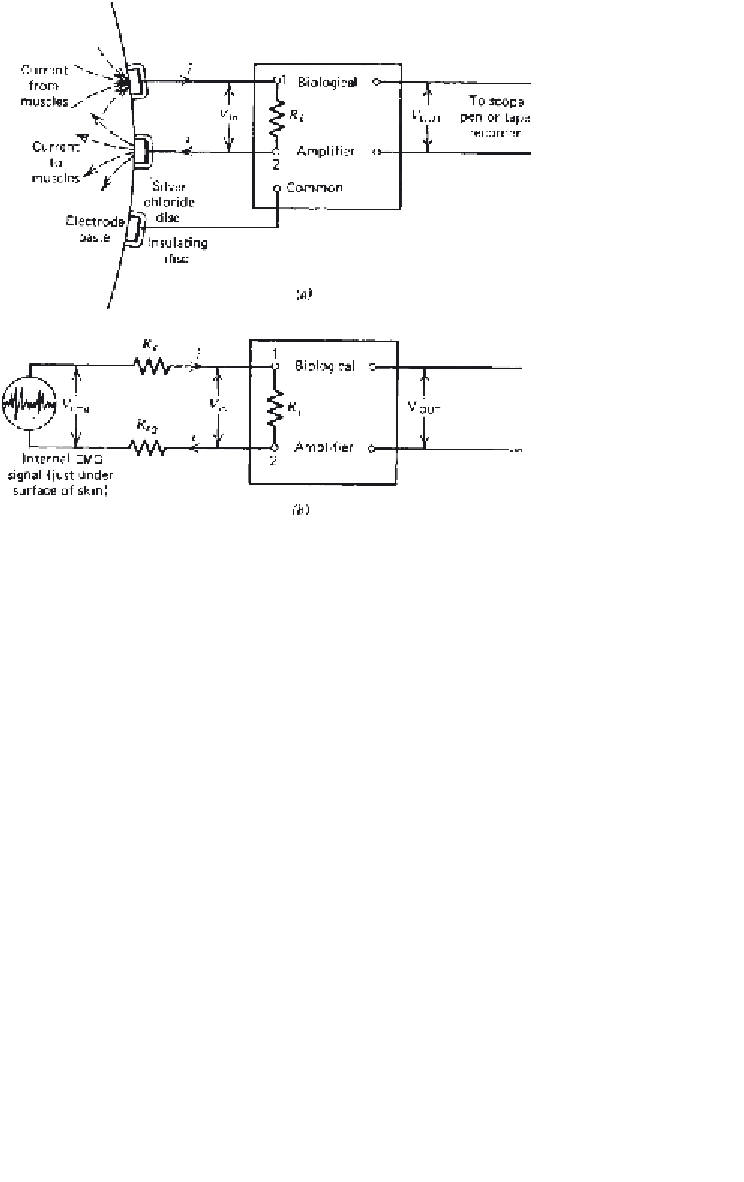Biomedical Engineering Reference
In-Depth Information
Figure 10.5
Biological amplifier for recording electrode potentials.
(a)
Current result-
ing from muscle action potentials flows across skin — electrode interface to develop a
voltage
V
in
at the input terminals of the amplifier. A third, common electrode is nor-
mally required because the amplifier is a differential amplifier.
(b)
Equivalent circuit
showing electrodes replaced by series resistors
R
s1
and
R
s2
.
V
in
will be nearly equal to
V
EMG
if
R
i
>>R
s
.
terminals of the amplifier. Consider the amplifier represented in Figure 10.5
a
.
The active input terminals are 1 and 2, with a common terminal
c
. The need
for a three-input terminal amplifier (differential amplifier) is explained in
Section 10.2.4.
Each electrode-skin interface has a finite impedance that depends on many
factors: thickness of the skin layer, cleaning of the skin prior to the attachment
of the electrodes, area of the electrode surface, and temperature of the elec-
trode paste (it warms up from room temperature after attachment). Indwelling
electrodes have a higher impedance because of the small surface area of bare
wire that is in contact with the muscle tissue.
In Figure 10.5
b
, the electrode-skin interface has been replaced with an
equivalent resistance. This is a simplification of the actual situation. A correct
representation is a more complex impedance to include the capacitance effect
between the electrode and the skin. As soon as the amplifier is connected to
the electrodes, the minute EMG signal will cause current to flow through the
electrode resistances
R
s1
and
R
s2
to the input impedance of the amplifier
R
i
.










Search WWH ::

Custom Search